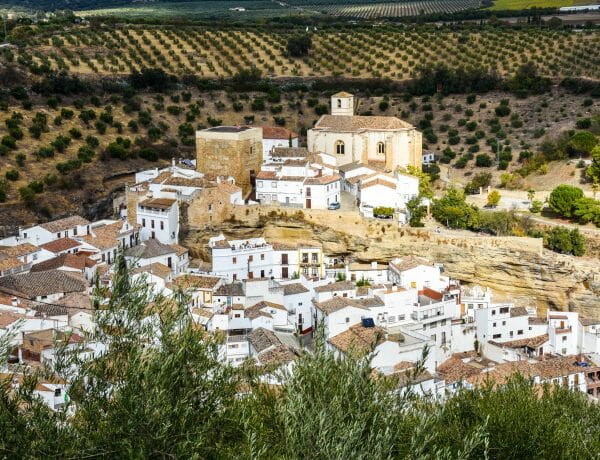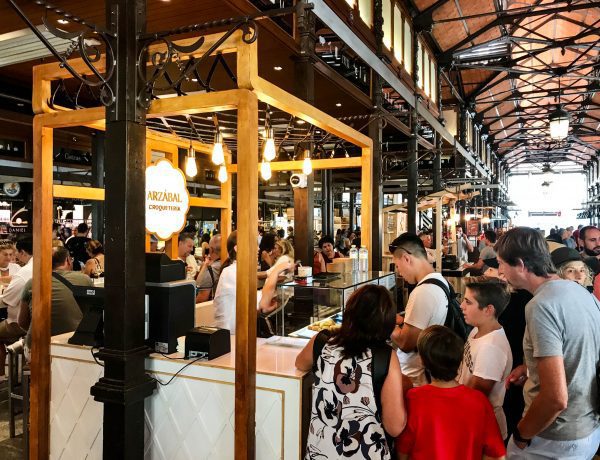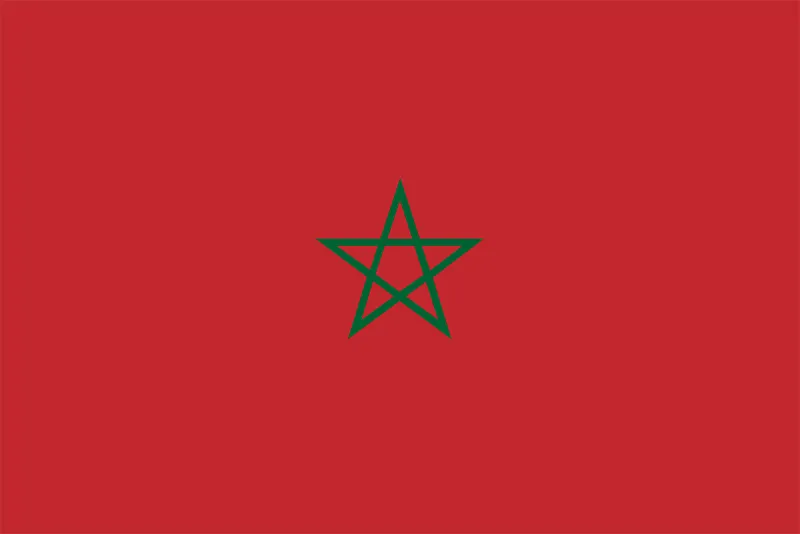
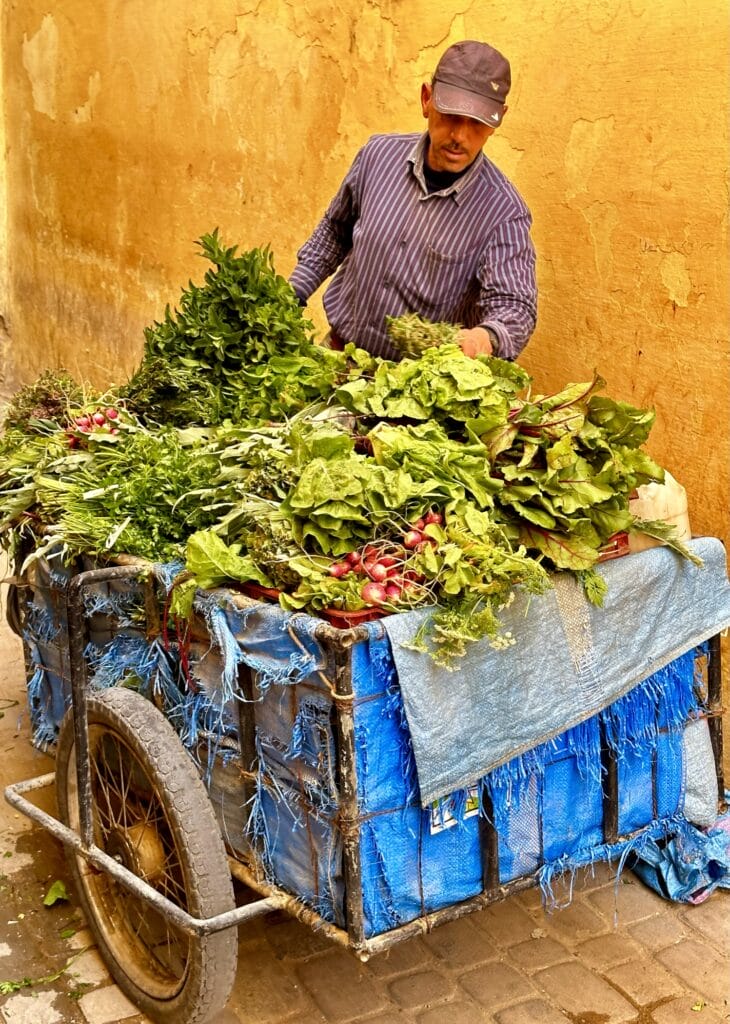

“I love Morocco – it’s a real challenge to all five senses. You think you know something, and you don’t. It’s wonderful. It keeps you on your toes that way.”
Amy Ryan Actress
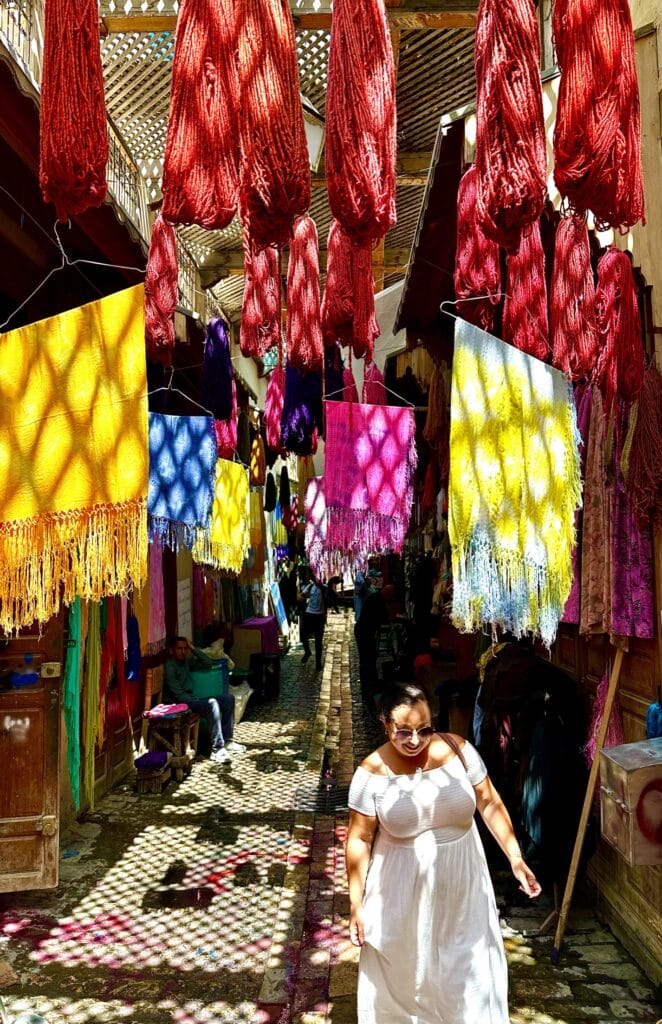

Top Six Destinations In Morocco
- Marrakech: Known for its bustling souks, vibrant Djemaa el-Fna square, and stunning palaces like the Bahia Palace, Marrakech is a sensory delight where tradition meets modernity. It offers luxurious riads tucked away in serene courtyards.
- Fes: The medieval city of Fes boasts the world’s oldest university and a maze-like medina filled with tanneries, mosques, and artisan workshops. These offer a glimpse into Morocco’s rich history and craftsmanship, along with tranquil gardens perfect for peaceful strolls.
- Chefchaouen: Nestled in the Rif Mountains, Chefchaouen is famous for its striking blue-washed buildings, narrow streets adorned with colorful pots, and a laid-back atmosphere perfect for relaxation and photography, with a backdrop of scenic hiking trails leading to panoramic viewpoints.
- Essaouira: A charming coastal town known for its Portuguese architecture, windsurfing opportunities, and a bustling harbor filled with blue fishing boats, Essaouira offers a refreshing coastal retreat. Its lively markets provide fresh seafood and local handicrafts.
- Atlas Mountains: A paradise for nature enthusiasts and hikers, the Atlas Mountains feature picturesque valleys, traditional Berber villages, and challenging trekking routes with stunning panoramic views. They also offer opportunities for cultural immersion through homestays with Berber families.
- Sahara Desert: Experience the magic of the Sahara Desert with its vast dunes, camel treks, and unforgettable starry nights at desert camps. These offer a unique glimpse into Morocco’s awe-inspiring natural landscapes and the opportunity to visit nomadic communities.
Did you know?
Country Stats
- Population: Approximately 36 million people live in Morocco (2022 estimate).
- Capital: Rabat is the capital city of Morocco.
- Languages: Arabic is the official language, but French is common, especially in business and government.
- Religion: Islam is the predominant religion, with nearly 99% of the population identifying as Muslim.
- United States State Dept Risk Level: Two Exercise caution due to terrorism
- Area: Morocco covers an area of about 446,550 square kilometers (172,410 square miles).
- GDP: The GDP (nominal) of Morocco was around USD 120 billion in 2021.
- Economy: Agriculture, tourism, and mining are significant sectors of the Moroccan economy.
- Tourism: Morocco is a popular tourist destination, attracting over 13 million visitors annually (pre-pandemic).
- UNESCO Sites: Morocco boasts 9 UNESCO World Heritage Sites, including the historic city of Marrakech and the Medina of Fez.
- Education: Morocco has made significant strides in education, with literacy rates around 72% (2019).
- Exports: Key exports include phosphates, textiles, and agricultural products like citrus fruits and vegetables.
- Climate: Morocco experiences diverse climates, from the Mediterranean in the north to the desert in the south.
- Royal Family: Morocco is a constitutional monarchy with King Mohammed VI as the current monarch.
- Women in Parliament: Women hold nearly 21% of the seats in the Moroccan Parliament (2022).
- Internet Penetration: Around 76% of the population had access to the internet as of 2021.
- Youth Population: Approximately 31% of Morocco’s population is under 15 years old.
- Currency: The currency used in Morocco is the Moroccan dirham (MAD).
- Infrastructure: Morocco has invested heavily in infrastructure development, including high-speed trains connecting major cities.
- Healthcare: Morocco has made progress in healthcare, with improvements in life expectancy (around 76 years).
- Electricity: Nearly 99% of urban and 92% of rural households in Morocco have access to electricity.
- Unemployment Rate: The unemployment rate in Morocco was approximately 10.5% as of 2021.
- Foreign Direct Investment (FDI): Morocco attracted about 2.2 billion USD in FDI inflows in 2020.
- Mobile Phone Penetration: Over 90% of Moroccans have mobile phone subscriptions, contributing to a dynamic telecommunications sector.
- Renewable Energy: Morocco is a leader in renewable energy in Africa, with plans to generate 52% of its electricity from renewable sources by 2030.
- Berber Population: Around 40% of Moroccans identify as Berber (Amazigh), with Tamazight recognized as an official language alongside Arabic.
- Top Imports: Refined petroleum products and crude oil, automobiles and motor vehicles, wheat, electrical machinery, and equipment.
- Top exports: Phosphates and derivatives dominate, as the country is one of the world’s largest exporters of phosphate rock and agricultural products such as citrus fruits, vegetables, and fish, textiles and apparel, automotive components, and electrical goods.
- Life Expectancy: The life expectancy in Morocco is approximately 76 years for both males and females.
- Literacy Rate: Morocco’s literacy rate is around 72%, with variations between genders (79% for males and 64% for females).
Fun Facts
- Blue City: Chefchaouen, known as the “Blue City,” is famous for its blue-washed buildings, creating a picturesque and unique atmosphere.
- Movie Sets: Morocco has been a popular filming location for movies and TV shows, including “Gladiator,” “Game of Thrones,” and “Casablanca.”
- Mint Tea: Moroccan mint tea is a traditional beverage, often with sugar, and is a symbol of hospitality.
- Snake Charmers: You can find snake charmers in the Djemaa el-Fna square in Marrakech. They perform with cobras and other snakes.
- Atlas Studios: Atlas Studios in Ouarzazate is one of the largest film studios in the world and makes many epic films.
- Hassan II Mosque: Located in Casablanca, it is one of the largest mosques in the world and can accommodate over 100,000 worshippers.
- Sahara Desert: The Sahara Desert covers about one-third of Morocco’s territory and is home to stunning dunes and unique landscapes.
- Fes El Bali: The medina of Fes El Bali is one of the largest car-free urban areas in the world, filled with narrow alleys and bustling markets.
- Argan Oil: Morocco is one of the largest producers of argan oil, famous for cosmetics and culinary purposes.
- Gnawa Music: Gnawa music, originating from sub-Saharan Africa, is popular in Morocco and combines traditional African beats with Arabic-Islamic spiritual lyrics.
- Traditional Clothing: The djellaba is a traditional Moroccan garment worn by both men and women, especially in rural areas.
- Date Palms: Morocco is one of the largest producers of dates in the world, with date palms covering large areas in the southern regions.
- Art and Handicrafts: Moroccan artisans produce intricate tile work (zellige), pottery, leather goods, and carpets (especially Berber rugs).
- Imperial Cities: Morocco has four imperial cities—Marrakech, Fes, Meknes, and Rabat—each with its own unique history and architectural wonders.
- Berber Culture: Berber (Amazigh) culture is an integral part of Moroccan identity, with its own language, traditions, and festivals.
- Diverse Landscapes: Morocco offers diverse landscapes, from mountains (Atlas Mountains) to beaches (Atlantic and Mediterranean coasts) and deserts (Sahara).
- Spices and Souks: Moroccan souks (markets) are vibrant places where you can find spices like saffron, cumin, and paprika, creating a feast for the senses.
- Ramadan: During Ramadan, the Islamic holy month of fasting, Moroccan cities come alive at night with special foods and festivities after sunset.
- Hammams: Traditional Moroccan bathhouses called hammams offer a relaxing experience with steam baths, massages, and exfoliation treatments.
- Henna Art: Henna (mehndi) art is a traditional form of body decoration in Morocco, often used during weddings and celebrations.
- Fossil Discoveries: Morocco has rich deposits of fossils, including some of the oldest vertebrate fossils.
- Traditional Festivals: The Festival of Roses in the town of Kelaat M’Gouna celebrates the blooming of roses with parades, music, and the crowning of a Rose Queen, showcasing Morocco’s vibrant cultural heritage.
Morocco Map
Good to know before you go
- In Morocco, tipping is an integral part of the hospitality industry and is generally expected in various service contexts. When dining at restaurants, it’s customary to leave around 10% of the bill as a tip if it does not include a service charge. Hotel staff, such as bellboys and housekeepers, appreciate a small gratuity of 10-20 Moroccan dirhams per service. Taxis may not always require a tip, but rounding up the fare or adding a small amount is considered polite. Tour guides and drivers for excursions typically receive tips, the amount of which can vary based on the service provided. In markets and other places where you receive assistance, tipping is discretionary but can be a gesture of appreciation for extra help.
- As a tourist in Morocco, it’s best to dress modestly and respectfully while also considering the climate and activities you’ll be engaging in. Women: For women, especially when visiting religious sites or conservative areas, it’s advisable to wear loose-fitting clothing that covers the shoulders, upper arms, and knees. Maxi skirts or pants paired with tops that cover the chest and midriff are appropriate. A scarf or shawl can be handy to cover your head if entering a mosque. Men: Men typically wear long pants or shorts that reach the knee and shirts that cover the shoulders. T-shirts and polo shirts are common and lightweight; breathable fabrics are ideal due to the warm climate. Footwear: Comfortable walking shoes or sandals are essential, especially for exploring markets and historical sites where you may be walking on uneven surfaces. Accessories: Sunglasses, a sunhat or cap, and sunscreen are essential for protection from the sun, particularly in the hotter months.
- Morocco has diverse climates, so pack accordingly. Light layers are helpful, as temperatures can vary significantly between day and night and from coastal areas to inland cities.
- While beachwear is acceptable at resorts and beaches, it’s respectful to cover up when leaving these areas. Avoid overly revealing clothing to minimize unwanted attention and show respect for local customs.
- Driving in Morocco presents a mix of experiences depending on where you are. Major highways linking cities are generally well-maintained, but rural roads can be narrower and less predictable. Traffic in urban centers like Casablanca and Marrakech can be intense, particularly during peak hours, requiring patience and defensive driving skills. Road signs are predominantly in Arabic and French, with some in English on central routes. It’s important to adhere to local traffic laws, including wearing seat belts and refraining from using mobile phones while driving. Be mindful of pedestrians, cyclists, and livestock on roads, especially outside urban areas. Navigating with GPS or mobile apps can be helpful, and being prepared for occasional police checkpoints is advisable. Parking can be challenging in city centers, so using designated areas or hotel facilities is recommended. Finally, you will often come upon roads stopped by heavily armed police/military. Have documents at the ready.
- The quality of life in Morocco varies significantly based on factors such as geographic location, income level, and access to services. Significant cities like Casablanca and Marrakech offer modern amenities, healthcare facilities, and educational opportunities, contributing to a higher standard of living. Rural areas, however, may face challenges such as limited infrastructure and fewer resources. Healthcare services are improving, though disparities between urban and rural areas persist. Employment opportunities span sectors like agriculture and tourism, but unemployment rates can be high, particularly among youth.
- Morocco’s rich cultural heritage and social life provide opportunities for social interaction and cultural exploration, contributing positively to the overall quality of life experienced by its residents.
- Public restrooms in Morocco can vary in accessibility depending on the location and setting. In urban areas, such as popular tourist spots, shopping malls, and restaurants, public restrooms are generally available and relatively easy to find. However, the quality and cleanliness can vary, and some may require a small fee for use. In rural areas and less developed regions, finding public restrooms may be more challenging, and facilities may be more fundamental. Travelers should plan and use restroom facilities in hotels, restaurants, or other establishments when possible, especially when traveling outside major cities.
- Moroccans are known for their warm hospitality. It’s customary to greet people with a handshake and a friendly “Salam Aleikum” (Peace be upon you). Accepting invitations for tea or meals in homes or shops is a sign of respect and friendship.
- Sharing meals is an essential social activity. It’s polite to accept food and eat with your right hand, as the left hand is traditionally considered unclean. When dining, wait for the host to begin eating before you start.
- During Ramadan, the Islamic holy month of fasting, visitors should respect those observing fasting. It’s illegal to eat, drink, or smoke in public during daylight hours during Ramadan, except in designated areas or for non-Muslims in tourist areas.
- Bargaining is a common practice in souks (markets). Approach it as a friendly exchange rather than a confrontation. Start with a lower price and negotiate respectfully until both parties agree.
- Public displays of affection are considered inappropriate. Interactions should be modest and respectful in public spaces. Photography of people, especially women, should be done with permission.
- Non-Muslims are generally not allowed to enter mosques in Morocco. Respectful behavior is expected around religious sites, such as dressing conservatively and speaking quietly,
- Morocco has a rich artistic heritage. When purchasing souvenirs, appreciate and respect the craftsmanship in textiles, ceramics, and other traditional arts. If making large purchases such as rugs, the government pays for the shipping back to your native country.
- Greetings in Morocco reflect the country’s rich cultural diversity and traditions of hospitality. The most common greeting, “Salam Aleikum,” meaning “Peace be upon you,” is used throughout the day accompanied by a handshake. Responding with “Aleikum Salam” reciprocates the well-wishing. French greetings like “Bonjour” (Good morning) and “Bonsoir” (Good evening) are also widely understood, especially in urban areas. In Moroccan Arabic, informal greetings include “Sbah khir” for “Good morning” and “Msa lkhir” for “Good afternoon.” “Marhaba” is a friendly hello or welcome, while “Bslama” is used to bid farewell.
- Eating and shaking hands is only done with your right hand. The left hand is your “dirty” hand, as that is the hand used to wipe in the bathroom.
- Dining etiquette in Morocco centers around shared meals and traditional customs that emphasize hospitality and respect. Guests typically wait to be seated and may participate in a hand-washing ritual before and after meals. Meals are often communal, with dishes like tagine or couscous shared from a central plate. It’s customary to eat with the right hand, using bread to scoop up food. Accepting offers of tea or coffee is a sign of appreciation for hospitality. Engaging in polite conversation during meals is encouraged, avoiding sensitive topics. After dining, expressing gratitude to the host with “Shukran” is customary. Observing these dining customs not only enhances the dining experience but also fosters cultural understanding and appreciation for Moroccan traditions.
- Moroccan cuisine is renowned for its rich flavors and diverse influences, blending Arab, Berber, and Mediterranean culinary traditions. Essential dishes include couscous, a staple made from steamed semolina served with vegetables and meat; tagine, a slow-cooked stew named after the clay pot it’s cooked in, featuring a variety of ingredients and spices; and pastilla, a savory-sweet pie filled with pigeon or chicken, almonds, and spices. Harira, a hearty soup with tomatoes, lentils, and meat, is essential during Ramadan. Mechoui, roasted lamb or sheep seasoned and slow-cooked, is a festive delicacy. Mint tea, sweetened and infused with fresh mint, is a ubiquitous symbol of Moroccan hospitality.
- Mint tea, known locally as “atay b’nana,” is deeply ingrained in Moroccan hospitality customs and is often offered as a gesture of welcome and friendship. It symbolizes generosity, warmth, and social connection. When mint tea is offered in Morocco, it’s seen as respectful to accept, even if you don’t drink it all or take a few sips. Refusing mint tea could potentially be interpreted as rejecting the hospitality extended to you, which may cause offense or discomfort to your host. Therefore, graciously accepting mint tea is a cultural norm that enhances social interactions and reflects appreciation for Moroccan traditions.
- In Morocco, hammams are traditional public bathhouses that hold cultural and social significance. These communal spaces serve as places for cleansing, relaxation, and socializing. Hammams typically have separate sections for men and women and are integral to Moroccan hygiene practices. They consist of several rooms, including a hot steam room (beldi) where visitors relax and cleanse their bodies using black soap and exfoliating mitts (kessa). Afterward, a cold room (bayd) allows for cooling down and sometimes a final massage. Visiting a hammam is not just about physical cleansing but also about experiencing Moroccan culture and tradition firsthand.
Morocco Essential Info
U.S. Consular Emergency
The 24-hour number from a U.S. Phone is 1-888-407-4747
Outside of U.S. 011-202-501-4444
U.S. Embassy
U.S. Consulate General Casablanca
8 Boulevard Moulay Youssef,
Casablanca, Morocco
Telephone +(212) (522) 642-099
Emergency +(212)(661) 13-19-39
Fax +(212) (522) 29-77-01
Email: acscasablanca@state.gov
Website
https://ma.usembassy.gov/embassy-consulate/casablanca/
Emergency Numbers
GENERAL 112
Medical and Fire 115 Police 190
Country Code
+212
Time Zone
UTC+1
Adaptors for Morocco
“Standard” Euro plug
Type C or E
Driving
Right side
Official Morocco Tourism Office
When to go to Morocco
The best time to visit Morocco depends largely on your preferences for weather and the activities you plan to do:
- Spring (March to May): This is generally considered one of the best times to visit Morocco. The weather is mild and pleasant, with blooming flowers and green landscapes. It’s ideal for exploring cities, hiking in the Atlas Mountains, and visiting the desert.
- Fall (September to November): Similar to spring, fall offers pleasant weather, making it another popular time to visit Morocco. It’s a great time for cultural sightseeing, desert tours, and outdoor activities.
- Summer (June to August): Summers in Morocco can be sweltering, especially in inland cities like Marrakech and Fes. Coastal areas like Essaouira and Tangier are cooler and busy with tourists. If you can handle the heat, it’s a good time for beach vacations and mountain escapes.
- Winter (December to February): Winter can be cold, particularly in the Atlas Mountains and desert regions. Coastal areas remain relatively mild. It’s a quieter time for tourism, except during Christmas and New Year’s holidays. Winter is ideal for visiting desert areas during the day and enjoying cozy evenings in cities.
Our Favorite Morocco Resources
This resource section contains some Amazon affiliate links. If you use these links to buy something, we may earn a small commission at no additional cost to you. Thank you!
Travel Books/Guides
Moon Morocco: Local Insight, Strategic Itineraries, Desert Excursions (Moon Middle East & Africa Travel Guide) 2023 This is your passport to the most relevant, up-to-date advice on what to see and skip and what hidden discoveries await you in Morocco. We love their guides! Let this beautifully illustrated guide be your travel partner. It features excellent photography and lots of details to aid in planning. Discover this fantastic travel guide here.
Our favorite websites
1. Official Morocco Tourism Office
2. U.S. Department of State: Bureau of Consular Affairs Morocco Country Info
We cannot encourage you enough to visit this website as you plan and prepare for your trip. The U.S. Federal Government addresses the safety, security, travel risk, entry, exit, visa documents mandates, emergency U.S. and Embassy contacts, health, local laws, exceptional circumstances, threats, traveler vulnerabilities, government warnings, and transportation in Switzerland. This is your best and most reliable resource for all this critical info. Check back often before you go, as things can change quickly. Being prepared is essential in all travel, but especially internationally.
3. The Center for Disease Control and Prevention (CDC) Morocco Travelers Health Resource
This CDC travel resource provides essential health info for your specific destination. Using their tool, you can determine which vaccines, medications, and health advice recommendations are needed for Morocco.
Our favorite apps
Google Maps: Trip and Holiday Organizer. The app instantly displays all your travel options, restaurants, activities, and accommodations when you enter any address, landmark, or city. We have come to rely on it when using public transportation; it has been flawless in getting us on the right bus or metro. Find it on your App Store.
Duolingo-Language Lesson Audio lessons that help improve your listening and speaking skills. Find it on your local App Store.
Google Translate: We use this often to practice proper pronunciations of any language we encounter while traveling. As we always encourage, it is essential to learn the basics of greeting and thanking people in the local language. Google Translate was an easy app to use. If needed, you can enter text in English, and it will speak back in the language you need to aid in communicating with locals.
Do you have a favorite Morocco travel resource? Share your favorites in the comments section at the bottom of this page or
© 2025 Wanderers Compass All Rights Reserved
Flights, Accommodations, and Everything You Need to Book in One Place
Are you planning a vacation this year? Start your research early to explore your options and find what fits your budget. By booking your own travel, you’ll uncover great deals and have complete control over your itinerary. The links below can be used for all elements of your trip, not just accommodations.
It is essential to price out accommodations on various sites. Expedia is a US-based company, whereas Booking.com is Europe-based. Not all properties appear on both, so it is ideal to check both out. Our personal first choice is Booking.com. If the establishment has a website, check the price there as well. Click the link below to check out hotels and vacation homes in the area. It may be just the motivation you need to start planning that next grand adventure.
Our Morocco Photo Gallery

















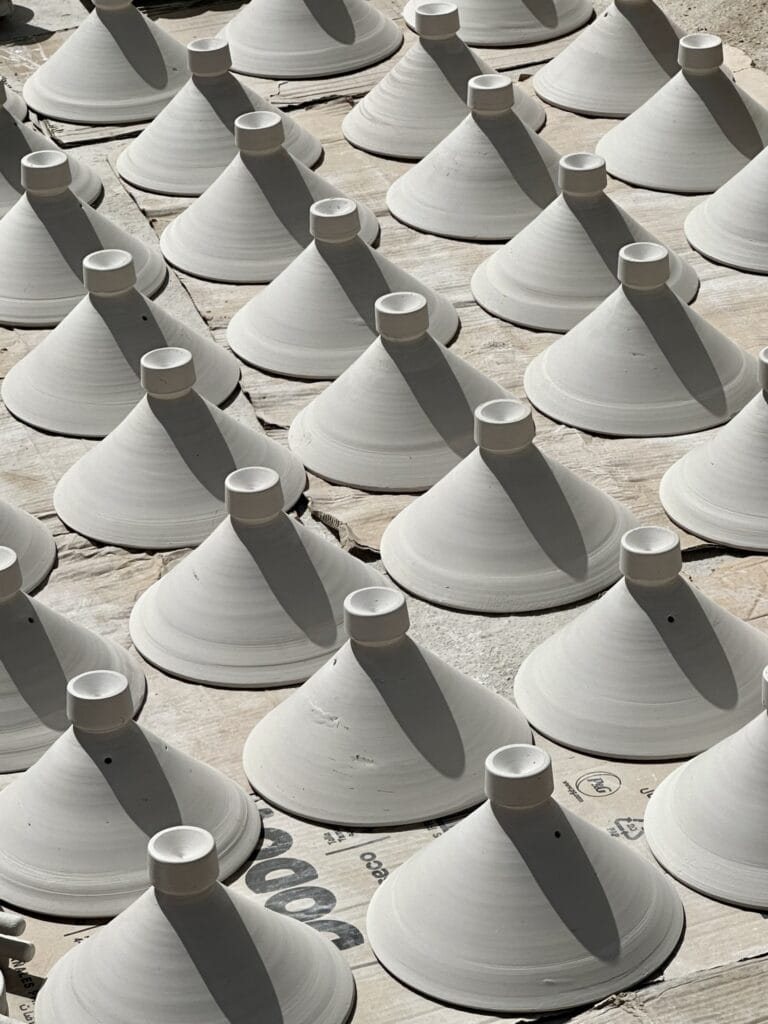




















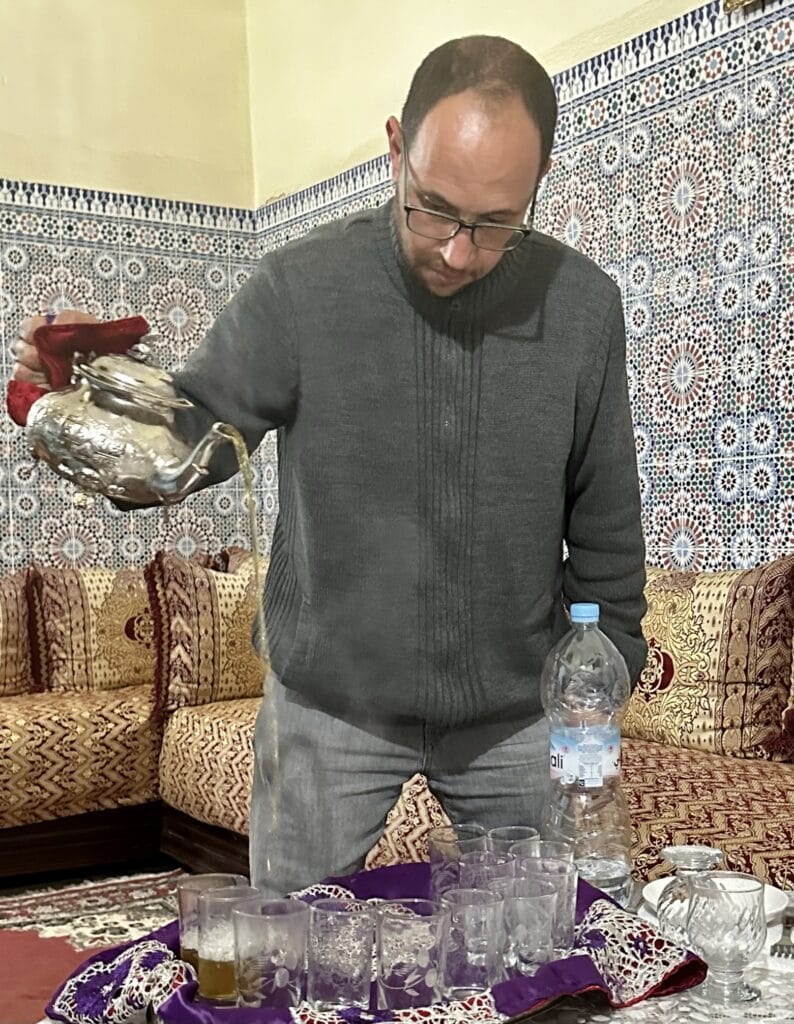

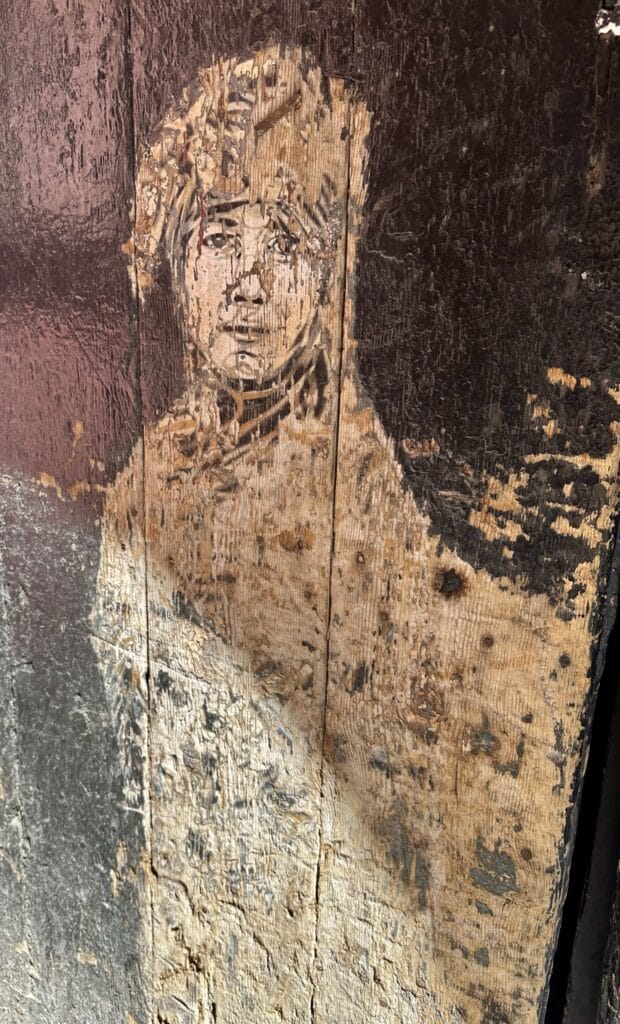

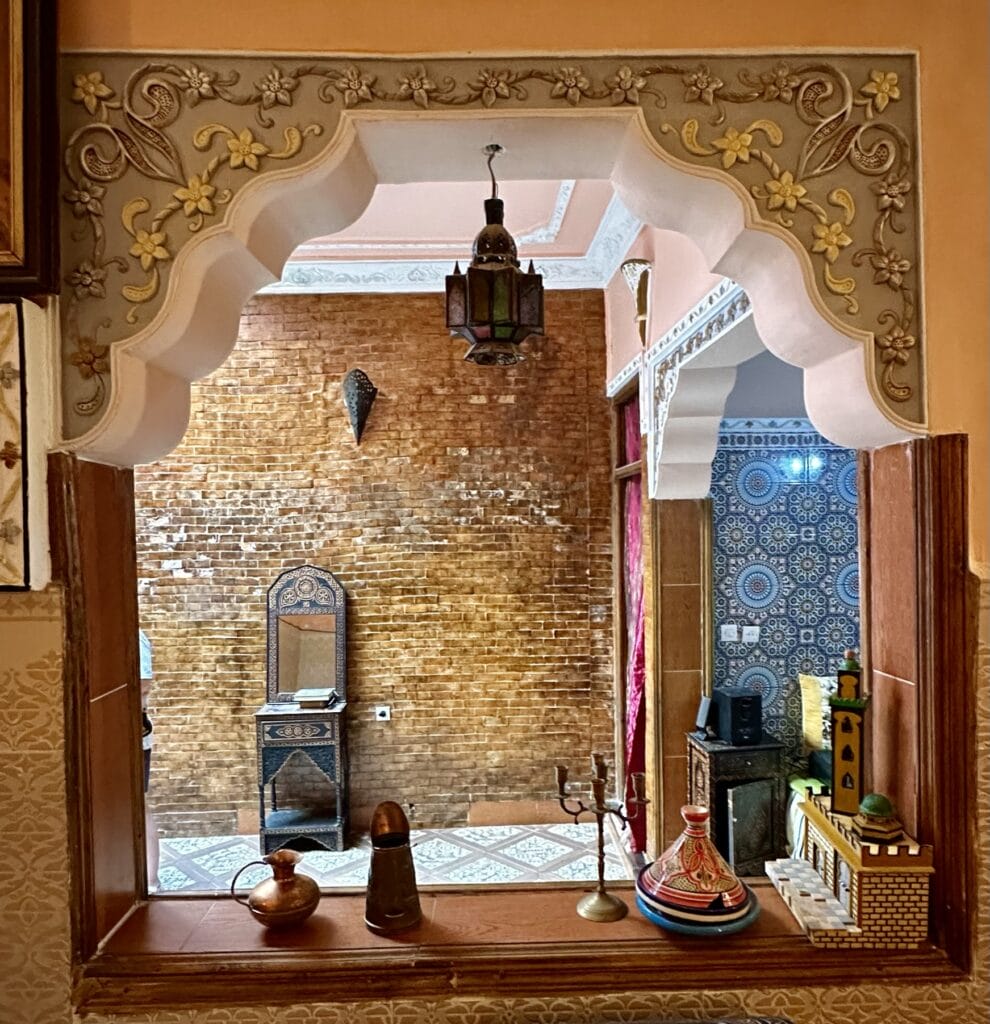





















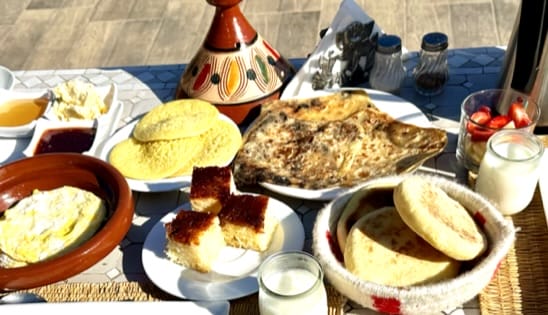


Our Top Recommended Travel Products
Travel Insurance
Squaremouth.com
Our favorite travel insurance site!
We strongly advocate for comprehensive travel insurance, not only for minor inconveniences but also for major, unexpected events like medical emergencies. We never leave home without it. Our go-to resource is Squaremouth.com. which offers a user-friendly platform that connects you with top-rated, reputable insurance carriers. Plus, they’ll mediate on your behalf if you run into any issues.
To empower you as a consumer, we recommend you read our blog post on why travel insurance is essential and how to secure the best coverage from leading companies at an affordable price.
MedjetAssist
Medical transport back home from anywhere in the world
Medjet is a leading provider of global air medical transport. Unlike traditional travel insurance, which typically covers medical evacuation to the nearest facility, Medjet goes further by ensuring you’re transported back to the U.S. to the hospital of your choice once you’re stable enough to fly. Medjet offers membership plans that focus on medical transport, while Medjet Horizon provides expanded coverage for broader protection. Individual trip policies start at just $99, and annual policies are available for around $300. Most policies have an age limit of 74.
To learn more about how Medical Evacuation membership with Medjet Assist works, check out our blog post for a more detailed review.
Accommodations and Airfare
Booking.com
Hotels, Home rentals, BNBs, Flights, and other Transportation & Tours
Booking.com connects millions of travelers to unforgettable experiences, a wide range of transportation options, and incredible places to stay—from homes to hotels and beyond. As one of the world’s largest travel marketplaces, it supports well-known brands and entrepreneurs of all sizes. For its convenience, variety, and reliability, it’s our preferred booking platform.
Transportation
Expedia and VRBO
Hotels, home rentals, BNBs, flights, and other transportation & tours
Expedia is a U.S.-based company with a mission to make global travel accessible to everyone, everywhere. At Wanderers Compass, we embrace independent travel, and platforms like Expedia are essential to making that a reality. Expedia allows you to book every aspect of your trip—from flights and accommodations to rental cars, cruises, and activities—making it a one-stop shop for all your travel needs.
Daytrip
Personalized city-to-city private car transfer service
Daytrip provides an affordable private car service for city-to-city transfers worldwide, and we absolutely love their service. It’s a cost-effective alternative to renting a car, providing comfortable, stress-free travel with the bonus of scenic stops along the way. For example, we used Daytrip for travel between Budapest and Vienna, enjoying some fantastic detours to local attractions. With professional drivers and customizable routes, Daytrip ensures a smooth ride while allowing you to explore hidden gems and unique sights along your journey.
To learn more about how Daytrip, check out our blog post for a more detailed review.
Travel Experiences
Viator
The leading marketplace for travel experiences
Viator believes that travel is all about creating unforgettable memories. With over 300,000 experiences to choose from—ranging from simple tours to extreme adventures, plus a wide array of unique, niche activities—it’s never been easier to make lasting memories. We frequently use Viator during our travels and especially appreciate their flexible cancellation policy, which adds peace of mind to every booking.
Communication products for seamless connectivity overseas
GigSky International eSIM Data Plans
Local Prices. No Roaming. Fastest Networks.
GigSky eSIM effortlessly connects travelers around the globe, eliminating the need to swap physical SIM cards or deal with surprise roaming charges. With affordable data plans and instant activation, you can enjoy reliable internet access in over 190 countries, making your travel experience more convenient than ever. Plus, they offer a fantastic deal: a free 100 MB data plan with no credit card required. They are so confident that you will love their service!
Enjoy 10% off all GigSky Plans (except cruise and inflight) with our discount code WCOMPASS10.
To learn more about how GigSky works, check out our blog post for a more detailed review.
Shopping
Wanderers Compass Amazon Storefront
An excellent source for all travel essentials and guides that we have vetted ourselves
Amazon is one of the world’s most comprehensive online shopping platforms, offering lower prices, a wide selection, and fast delivery through teams worldwide.
This page contains affiliate links. When you purchase through these links, we may earn a small commission at no extra cost to you. Thank you for your ongoing support!











